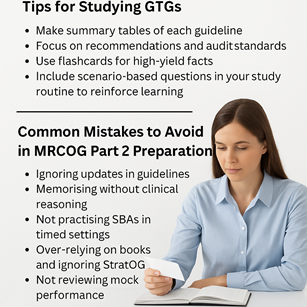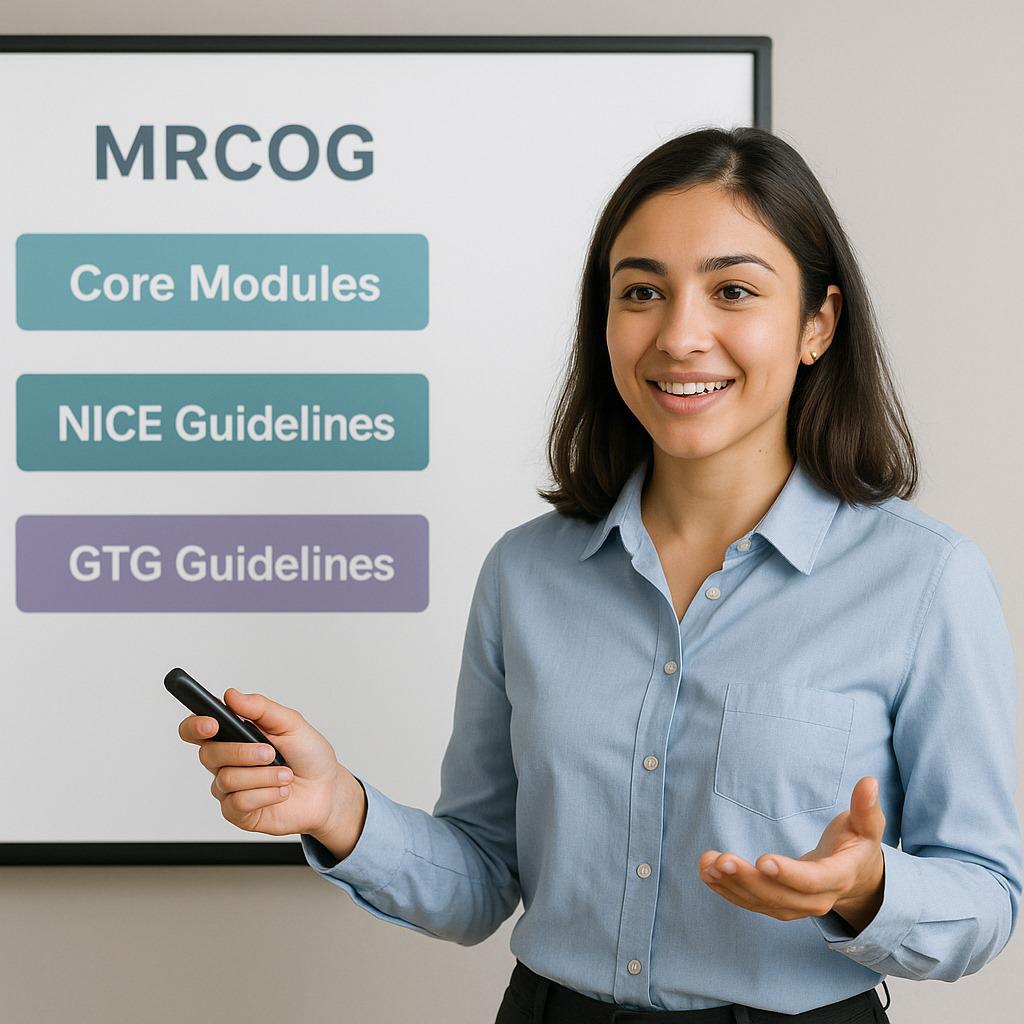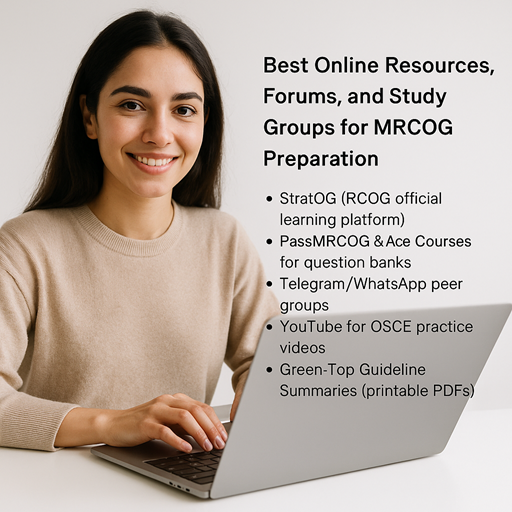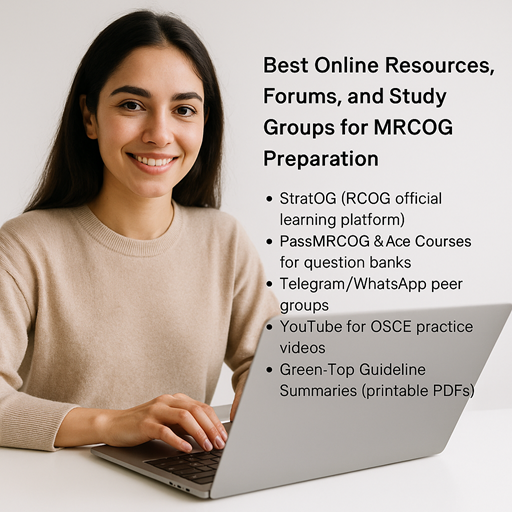2025-04-23 | Category: Mrcog 2

📗 Mastering Green-Top
Guidelines for MRCOG Part 2: Tips, Pitfalls, and Study Strategies
The Green-Top Guidelines (GTGs) published by the Royal
College of Obstetricians and Gynaecologists (RCOG) are an essential part of
MRCOG Part 2 preparation. These evidence-based clinical practice guidelines
form the backbone of exam questions, especially in Single Best Answer (SBA) and
Extended Matching Question (EMQ) formats.
If you’re preparing for MRCOG Part 2, understanding and
applying the GTGs is non-negotiable. This article walks you through effective
strategies for GTG study, and flags common mistakes to avoid—so you
can pass with confidence.
✅ Why Green-Top Guidelines Matter
- 🔹
Directly referenced in most SBA/EMQ exam questions
- 🔹
Provide current, RCOG-approved clinical standards
- 🔹
Often used to justify management options in mock and real clinical
settings
- 🔹
Essential for patient safety and risk management components in both Part 2
and 3
Explore the official GTG list here:
🔗
RCOG
Green-Top Guidelines Directory
🧠 Effective Study Tips
for GTG Mastery
📋 1. Create Summary
Tables
Summarise key sections of each guideline in a structured
format:
|
Section |
Summary |
|
Background |
Why the guideline exists, prevalence, risk factors |
|
Investigations |
First-line, second-line, imaging, bloods |
|
Management |
Conservative, medical, surgical options |
|
Recommendations |
Strength of recommendation (A, B, C, ✓) |
|
Audit Criteria |
Key performance indicators for clinical application |
Download pre-made templates or build your own spreadsheet.
🖍️ 2. Highlight
Recommendations and Audit Standards
Focus on:
- Management
algorithms
- RCOG-recommended
interventions
- Dosages
and treatment thresholds
- Timing
of intervention (e.g., corticosteroids at 24+0 weeks in PPROM)
📌 Tip: These often
appear verbatim in SBAs.
📇 3. Use Flashcards for
Active Recall
Use platforms like:
What to include on flashcards:
- Key
thresholds (e.g., PPH = blood loss >500 mL)
- Contraindications
(e.g., Tocolysis in PPROM)
- Investigations
of choice
- Criteria
for referral or delivery
🧪 4. Reinforce with
Clinical Scenarios
Apply each GTG in:
- Daily
SBA/EMQ practice
- Case-based
group discussion
- Scenario-mapping:
“What would I do if this patient presents at 30+4 with X?”
⚠️ Common Mistakes in MRCOG Part
2 Preparation
❌ 1. Ignoring GTG Updates
GTGs are updated regularly. Always check the most current
version on the RCOG website. Outdated content can lead to incorrect answers,
especially for audit recommendations and drug regimens.
📌 Stay updated:
🔗
Latest
GTG Updates & Revisions
❌ 2. Rote Memorisation Without
Clinical Application
It’s not enough to know that erythromycin is
first-line for PPROM—you need to understand why, when to initiate,
and what to do if the patient has a penicillin allergy.
🎯 Apply GTGs using "what-if"
scenarios to test depth of understanding.
❌ 3. Not Practicing in Timed Exam
Conditions
Many candidates struggle to finish the paper. Time-bound
question practice helps build:
- Decision
speed
- Pattern
recognition
- Prioritisation
of clinically relevant facts
Try:
- 30
Qs in 45 minutes
- Mock
papers every 2–3 weeks
❌ 4. Over-reliance on Books Alone
Textbooks provide theory, but GTGs give you exam-ready
application. StratOG modules, mock banks, and GTG-guided notes are more
aligned with the MRCOG format.
StratOG modules also offer self-assessments and case
discussions aligned with the RCOG curriculum:
https://www.rcog.org.uk/careers-and-training/training/resources-and-support-for-trainees/elearning-for-trainees/
❌ 5. Neglecting Mock Feedback and
Performance Tracking
Mock exams reveal:
- Recurring
mistakes
- Weak
GTG areas
- Time
management issues
Keep a “mistake log” after every mock. Revisit those
GTGs before your next paper.
📥 Ready-to-Use Tools from
MRCOG PASS EXAMINATIONS
- GTG
summary tables (PDF & editable format)
- Weekly
guideline focus sessions
- Live
SBA quizzes with explanations
- Mock
paper performance trackers
- Peer
study Telegram groups
💬 Final Thought
The GTGs are more than just a reading list—they are your blueprint
for clinical judgment, patient safety, and exam success. Make them a daily
part of your revision, not just a weekend chore.
✅ Be consistent.
✅
Apply clinically.
✅
Stay current.



